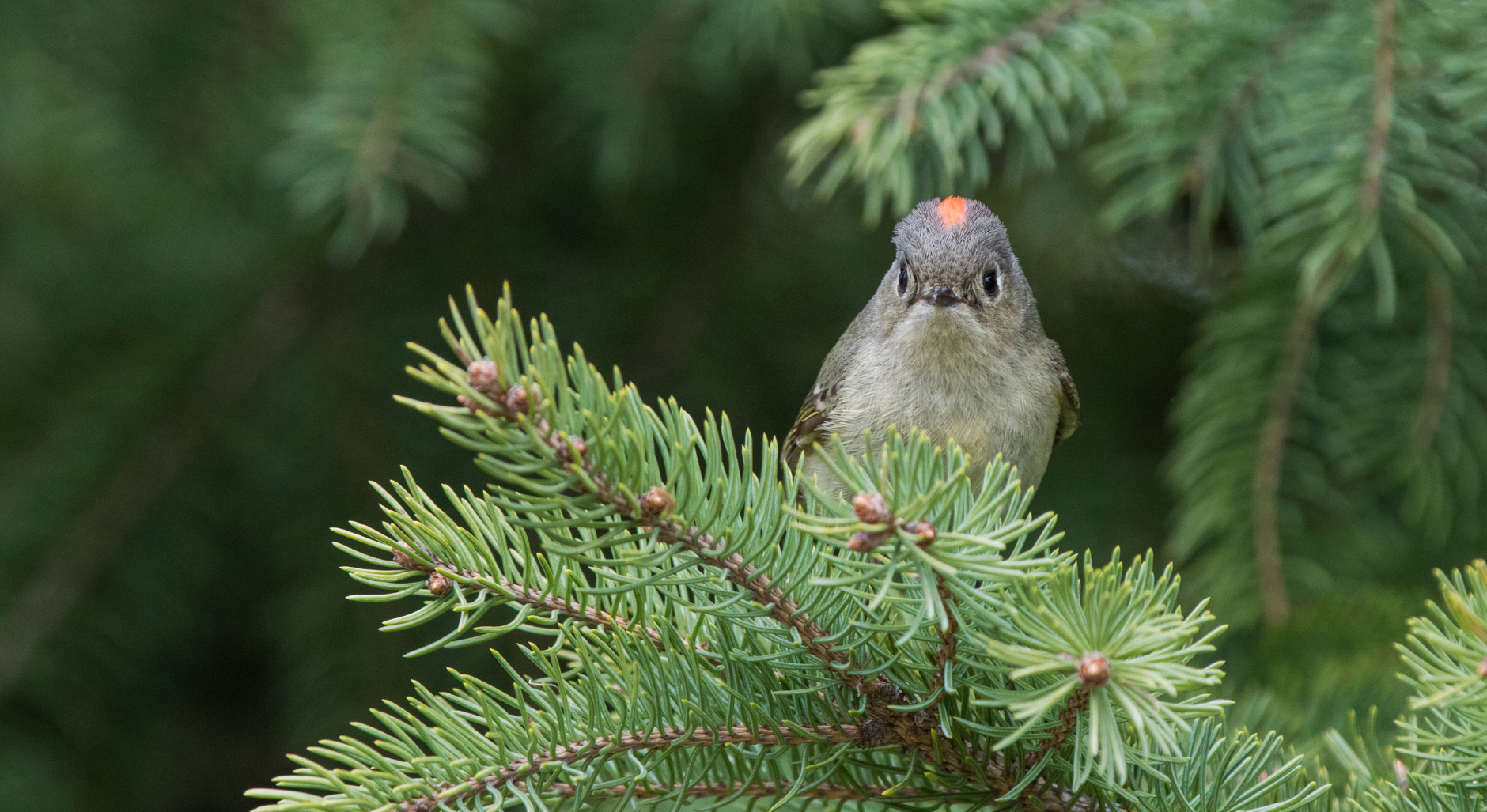December 2023 marks the 124th Christmas Bird Count, the nation’s longest-running community science bird project. From mid-December to early January each year, the Santa Clara Valley Audubon Society (SCVAS) sponsors these efforts by coordinating volunteers who venture out to the open spaces of San José, Palo Alto, Morgan Hill, and Mount Hamilton to take part in assessing the health of bird populations and to help guide future conservation action.
The primary objective of each Christmas Bird Count is to meticulously tally the number of individual bird species observed within a 15-mile-diameter circle in just one day. Over the years this tradition has spread its wings and flown into new territories, and data is now being collected from across the United States, Canada, and 17 other counties in the Northern Hemisphere. This data is made publicly accessible and is used by governing bodies like the Environmental Protection Agency, and U.S. Fish & Wildlife Service to monitor bird populations and migration (movement) patterns.
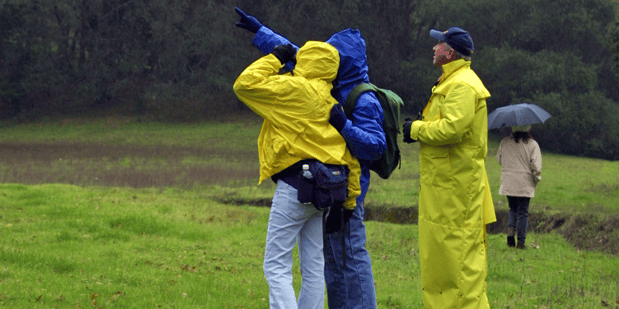 Photo: Volunteers from the 2004 Christmas Bird Count at Rancho Cañada del Oro Open Space Preserve. Courtesy of Cait Hutnik.
Photo: Volunteers from the 2004 Christmas Bird Count at Rancho Cañada del Oro Open Space Preserve. Courtesy of Cait Hutnik.
The Christmas Bird Count originates from a different holiday tradition called the Christmas Side Hunt. Before the turn of the 20th Century, sportsmen would take to the field and divide into teams. The side that hunted and killed the most birds (and other animals) in a single day claimed victory. However, on Christmas Day in 1900, an ornithologist named Frank M. Chapman proposed a new approach due to mounting concerns about declining bird populations. Chapman's visionary concept, known as the "Christmas Bird Census," aimed to shift the focus from hunting to observing and collecting data about birds instead.
Carolyn Knight, Education & Outreach Manager for SVCAS, has been birding for about 13 years, and was first introduced to the Christmas Bird Count in high school through a friend. “It rained the entire day, but they gave me donuts and I got to see a Western bluebird for the first time. It was spectacular.” From there, her love of birds grew, and she graduated from UC Davis with a Bachelor of Science in Wildlife, Fish, & Conservation Biology. “There is incredible biodiversity in Santa Clara County, and it’s really easy to miss. People tend to get bird blind. But once you learn how to identify birds, you suddenly notice them everywhere. In really urbanized areas it’s important to remember there are still wild things that exist around us that we can help support.”
.png?width=619&height=310&name=Osprey%20NCVAL%20David%20Mauk%20(2).png) Photo: Carolyn Knight, Education & Outreach Manager for SVCAS.
Photo: Carolyn Knight, Education & Outreach Manager for SVCAS.
Bird watching is one of the most accessible ways to connect with nature, according to Knight. “All you have to do is look out your window and wait.” During the Christmas Bird Count, you don’t have to be a bird expert to contribute. “Volunteers help make sure that every species is written down and accounted for,” says Knight. Because even experienced birders can’t look everywhere at once, “spotters” help look for birds to point out, even if they can’t identify them. During the SCVAS Christmas Bird Count, four count circles are designated throughout the county, and then divided into sectors by the count leader. From there, teams are assigned to diligently count as many birds as possible in each sector.
Knight notes that organizing these events takes an incredible amount of organization and requires a lot of helping hands. "You need a lot of volunteers. At least one member of each party has to be really good at birding just to be able to identify all of the birds out there. And not just by sight, but also the bird calls. It takes quite a bit of experience to get those skills.”
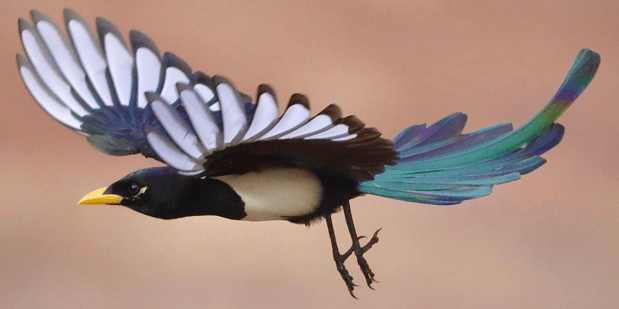 Photo: A yellow-billed magpie in flight. Courtesy of David Mauk.
Photo: A yellow-billed magpie in flight. Courtesy of David Mauk.
There is also the challenge of getting accurate numbers when birds are moving, especially if they are far away or in large flocks. Knight adds, “The weather can also be a challenge. The event happens rain or shine, and the birds don’t care if it’s raining, but if there are high winds, the birds won’t be flying, so it can be tough to get an accurate count.”
Another inherent challenge is fog, especially in places like Coyote Valley that are prone to tule fog – making visibility difficult for bird counters. Included in the Calero-Morgan Hill Christmas Bird Count sector is North Coyote Valley, a landscape that provides incredible wintering habitat for migratory birds. As a seasonal wetland, places like Laguna Seca see a lot of waterfowl and shorebirds enjoying the vernal pool throughout the winter months.
Knight describes Laguna Seca as an “interesting intersection where the hills come together.” Once the rain begins, places like Fisher Creek host many bird species, and the Christmas Bird Count gets lots of “fly overs” from birds traveling to and from Calero Reservoir. It’s a place many species of birds call home during the winter months, including notable species like bald and golden eagles, Ferruginous hawks, and even burrowing owls in certain hillsides.
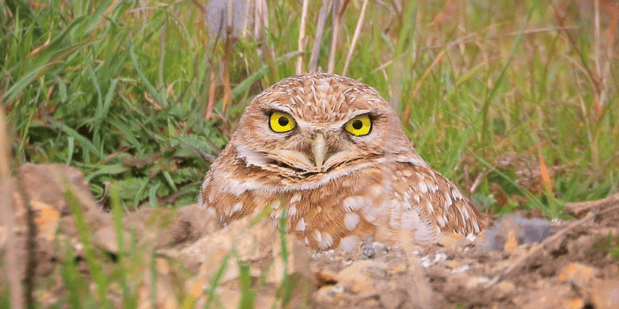 Photo: Burrowing owl. Courtesy of David Mauk.
Photo: Burrowing owl. Courtesy of David Mauk.
During the months of December 2022 and January 2023, a dedicated team of 362 volunteers meticulously counted a total of 232,699 birds across 198 different species. Overall, there was both good news as well as troubling new trends to report. On a global scale, bird populations are experiencing a rapid decline due to various factors such as habitat loss, human activities (such as climate change, plastic pollution, pesticides, and outdoor cats), and the prevalence of avian influenza, also known as bird flu. However, on a local level, recent counts starting from 2020 bring some hope, as they indicate an increase in the number of individual birds compared to previous years.
This positive development could be seen as a testament to the importance of protecting natural and working lands, which offer numerous benefits for both humans and wildlife. Notably, Coyote Valley plays a crucial role by connecting over one million acres of core habitat in the surrounding mountains, creating a “landscape linkage” that allows a multitude of species to disperse, migrate, and shift ranges in response to climate change.
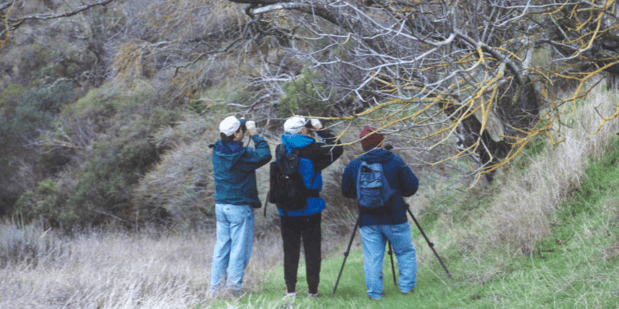 Photo: Volunteers from the 2004 Christmas Bird Count at Sierra Vista Open Space Preserve. Courtesy of Cait Hutnik.
Photo: Volunteers from the 2004 Christmas Bird Count at Sierra Vista Open Space Preserve. Courtesy of Cait Hutnik.
As for the December 2023 and January 2024 Christmas Bird Count, Knight hopes to see an increase in the number of individual birds counted and is keeping her fingers crossed that the SCVAS Christmas Bird Count volunteers will spot and record at least 200 different species of birds.
Will this year’s Christmas Bird Count be all its quacked up to be? To learn about, track, or take part in the Christmas Bird Count (or other bird-related community science efforts) in the Santa Clara Valley, be sure to visit the SCVAS website by clicking here.
